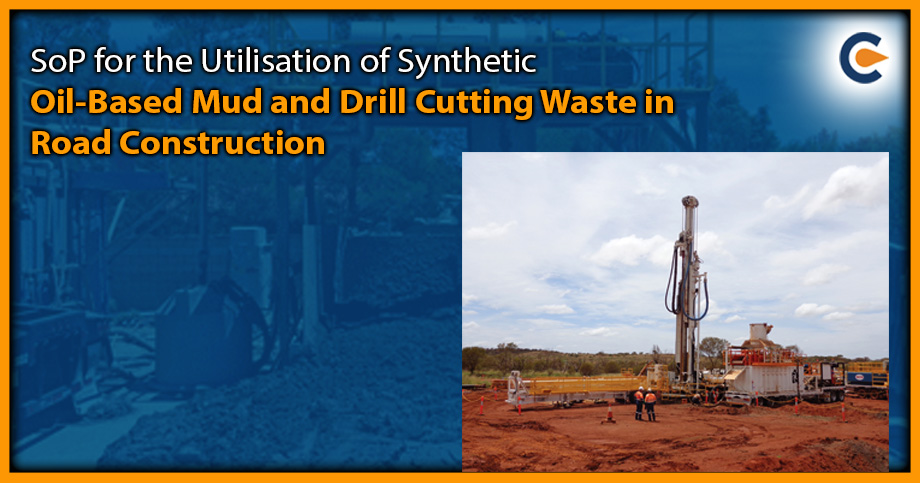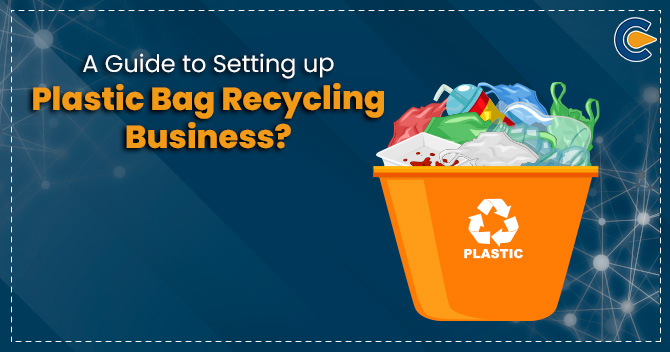The utilisation of synthetic oil-based mud and drill cutting waste in road construction can provide several benefits. Firstly, it offers a more sustainable solution for disposing of drilling waste, as it is repurposed for beneficial use. Secondly, it reduces the environmental impact associated with traditional methods of disposing of this waste. Finally, it can help to lower the cost of road construction projects by providing a cost-effective material for use as a subbase material. Overall, using synthetic oil-based mud/oil-based drill cutting waste in road construction offers an efficient and sustainable approach to waste management.
Statement of Purpose
This SoP for synthetic oil-based mud and drill cutting waste applies only to using treated mud (< 0.5 % TPH) in road construction. The treated mud is used as a subbase material in road construction as per approval/ guidelines/standards.
- Synthetic Oil-based mud/ drill cuttings must be procured in non-reactive covered containers like skips and transported to the unit as authorized by SPCB/PCC.
- Only those synthetic oil-based mud and drill-cutting waste must be procured which are generated from the use of only low toxicity OBM following provisions stipulated under Section 2 of the guideline for disposal of solid waste drill cutting and drilling fluids for offshore and onshore drilling operations notified under E (P) Rules, 1986 vide notification G.S.R notification 546(E) dated 30.08.2005.
- The containers of synthetic oil-based mud and drill cutting waste must be transferred to a covered designated storage place like Cement Dyke, which must be placed above the ground with a low raised bund wall. The same must be under a cool, dry, well-ventilated and under-covered storage shed, as the concerned SPCB/PCC authorised under the HOWM Rules 2016, to eliminate water intrusion.
- Mud and drill cutting waste must be transferred mechanically through shovels to the feeding hopper and conveyed to the vibratory feeder to homogenise the mud/drill cuttings.
- The larger particles in the synthetic oil-based mud and drill cutting waste that the vibrating feeder separates will be sent to a TSDF.
- A closed mechanical conveying system like the Redlor Conveyor will be utilised to transport materials to all intermediate processing units.
- The homogenised material will be processed through two thermal evaporators (dryers) in a series, with a retention time of 45 minutes each, while maintaining a temperature between 180-200°C via an indirect thermic fluid heating system. An appropriate vacuum pump will maintain a negative (suction) pressure condition of 200 to 300 mmHg.
- A provision will be made to collect thermic fluid from the dryers in a tank for reuse as a heating medium in the thermic evaporator.
- The vapours will be directed through oil scrubbers, followed by consensus. Oil will be used as the scrubbing medium. The scrubbed oil containing fines will be filtered through a filter like a pressure leaf filter, and the filtered oil will be allowed to settle in a sludge settling tank before recirculating it back to the scrubber.
- An adequate height vent of the vacuum pump of the condenser will be installed, as prescribed by the concerned SPCB/PCC.
- Condensate from the Dryers must settle in a Phase Separation Tank, and the oil must be recovered as reclaimed oil from the tank.
- The reclaimed oil may be sent to authorised used oil recyclers or used as fuel in a captive thermic fluid heater, provided it meets the prescribed standards and is permitted by the concerned SPCB/PCC.
- Water from the Phase Separation Tank must be treated in an effluent treatment plant to meet the effluent discharge standards prescribed for Petroleum oil refineries. The treated water may be used in the cooling tower of the condenser system and other industrial operations within the unit. The unit must maintain zero liquid discharge conditions.
- Oily sludge settled in the sludge settling tank, oil scum from the Phase Separation Tank, and the Pressure Leaf Filter residues must be filtered through a filter press. The filter cake generated must be sent to the preconditioner for homogenisation with synthetic oil-based mud and drill cutting waste. Bleed oil from the scrubber must be forwarded to authorised used oil recyclers.
- Dried solids from Stage II Dryer must be checked for quality control. Dried solids only with <0.5 % Total Petroleum Hydrocarbon (TPH) content must be used in road construction as a subbase material as per prescribed guidelines by Indian Road Congress.
- Approval/specifications/guidelines from Indian Road Congress must be obtained before using dried solids with <0.5 % TPH for road construction. The unit must maintain a record of the number of dried solids with corresponding TPH content, details of the person/contractor to whom it was handed over, and the location where it was used.
- The unit must ensure proper ventilation in the work zone and process areas, and all personnel involved in the waste utilization process must wear proper PPE in accordance with the Factory Act of 1948.
- The unit must provide suitable fire safety arrangements and flame-proof electrical fittings.
- The unit must ensure that they obtain synthetic oil-based mud and drill cutting waste from industries that have valid authorisation for generating and storing them from the concerned SPCB/PCC as required by the HOWM Rules, 2016. Additionally, waste transportation must comply with the provisions outlined in the said Rules.
- Before utilising synthetic oil-based mud and drill-cutting waste, the unit must obtain authorisation from the concerned State Pollution Control Board under the Hazardous and Other Wastes (Management & Transboundary Movement) Rules, 2016, for transportation (if done by the unit), storage, and utilisation of the waste.
- In the event of environmental damage caused by improper handling or utilisation of hazardous wastes, including accidental spills during storage, processing, transportation, etc., the unit will be responsible for implementing immediate response measures, conducting environmental site assessments, and remedying contaminated soil/groundwater/sediment, among other things.
- The unit must comply with the requirements of the Public Liability Insurance Act, 1991, as amended, wherever applicable, during the handling and utilisation of hazardous waste.
Records/Return Filing
- The unit needs to maintain a passbook provided by the concerned SPCB containing details of every procurement of synthetic oil-based mud/drill cuttings waste, including the sender’s address, dispatch date, quantity procured, sender’s seal and signature, and the date of receipt at the premises.
- The unit must maintain a log book that records the source and date of procurement of synthetic oil-based mud/drill cuttings, quantity, and date-wise utilisation, including operational parameters such as temperature and pressure, hazardous waste generation, and disposal.
- The unit must maintain a record of hazardous waste utilised, generated, and disposed of in accordance with Form 3 and file annual returns in Form 4 as per Rule 20(1) and (2) of the Hazardous and Other Wastes (Management and Transboundary Movement) Rules, 2016, with the concerned SPCB.
Licences and Documents Required for the Utilisation of Hazardous Waste
Documents required during the utilisation of synthetic oil-based mud and drill cutting waste:
- Authorisation from the concerned State Pollution Control Board (SPCB)/Pollution Control Committee (PCC) for the transportation, storage, and utilisation of the waste under the Hazardous and Other Wastes (Management & Transboundary Movement) Rules, 2016.
- Approval/specifications/guidelines from the Indian Road Congress for using dried solids with <0.5 % Total Petroleum Hydrocarbon (TPH) content in road construction as a sub-base material.
- Proper recordsof the quantity of dried solids with corresponding TPH content, details of the person/contractor to whom it was handed over, and the location where it was used.
- Authorisation from the concerned SPCB/PCC for generating and storing synthetic oil-based mud/oil-based drill cutting waste by the industries.
- Compliance with the provisions outlined in the Hazardous and Other Wastes (Management & Transboundary Movement) Rules, 2016 for waste transportation.
- Compliance with the “Guidelines on Implementing Liabilities for Environmental Damages due to Handling & Disposal of Hazardous Wastes and Penalty” published by the Central Pollution Control Board (CPCB) in case of environmental damage caused by improper handling or utilisation of hazardous wastes.
- Compliance with the requirements of the Public Liability Insurance Act. 1991[1], as amended, wherever applicable, during the handling and utilising hazardous waste.
Conclusion
Proper management and disposal of the waste require careful consideration of environmental and regulatory requirements. Hiring a consultant with expertise in the field is essential to ensure compliance with regulations and to design and implement an effective waste management plan. A consultant can thoroughly analyse the waste material and help identify the best practices for handling and disposing of synthetic oil-based mud and drill cutting waste. They can also ensure compliance with all applicable laws and regulations, including health and safety, environmental protection, and waste management. By hiring a consultant, stakeholders can ensure that the project proceeds efficiently, effectively, and in compliance with all relevant regulations while minimising environmental impacts and maximising the potential benefits.
Read Our Article: Standard Operating Procedure For De-Contamination Facility Handling Chemicals And Hazardous Waste











